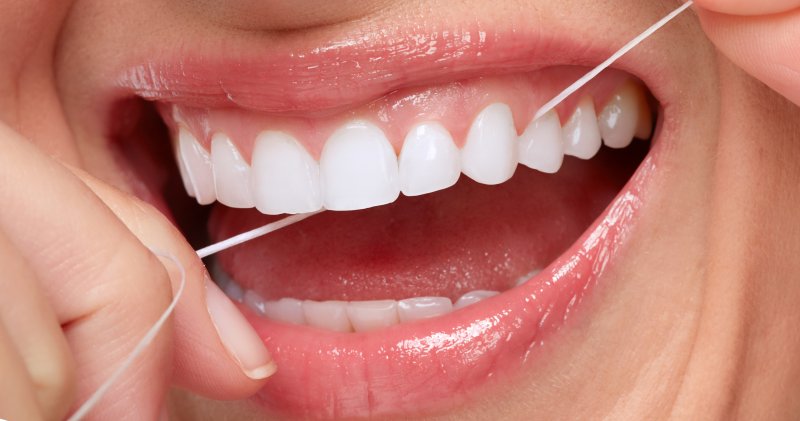
Floss as we know it has been around for over 200 years, but it hasn’t always been the same as it is today. Dentists and patients both know that flossing is a crucial step for preventing tooth decay, gingivitis, and periodontitis. But how did it all get started? Continue reading to learn all about the history of dental floss and how it has evolved through the years to become an essential step in modern preventive dental care.
The Invention of Dental Floss
This dental tool was created by Levi Spear Parmly back in 1819 in New Orleans. This dentist was trying to come up with a creative way to remove food that a toothbrush couldn’t quite reach, as he knew that it would lead to gum irritation and even periodontal disease. He began recommending that his patients use waxed silk thread. He believed that it was the most important part of oral care and wrote about it in his book, Practical Guide to the Management of Teeth.
Floss in Stores
It wasn’t until 1882 that floss was starting to be seen more widely in stores when a company called Codman & Shurtleff began selling unwaxed silk floss. Until then, toothpicks had become more popular to remove food from the teeth. Johnson & Johnson eventually secured the first patient for silk dental floss in history.
Nylon Floss
In the 1940s, Dr. Charles C. Bass created a dental floss made from nylon instead of silk. Now, it is a widely used material used to make floss. This is because silk has more of a tendency to shred, but nylon glides along the teeth more smoothly. Waxed floss came out shortly afterwards and is also a popular option today because many people find it more comfortable to use.
Frequent Flossing
Starting in the 1970s, dentists started recommending that their patients floss at least once daily which made the product much more common to be found in the average household. However, even today, most people don’t floss nearly as much as they are supposed to. According to the American Dental Association, 16% of people floss at least once a day, 20% floss only when something is stuck between their teeth, and 8% say that they never floss at all!
Remember that flossing is an extremely important part of your dental hygiene routine, and it is essential for optimal oral health. By flossing at least once each day, you are taking a huge step in order to prevent tooth decay, gum disease, and other oral health problems.
About the Author
Dr. Tommy Murph is a well experienced dentist who has been practicing for more than 25 years so far. He earned his Doctor of Dental Medicine from the Medical University of South Carolina and has completed over 600 hours of continuing education courses. Dr. Murph is a member of both the American Dental Association and the South Carolina Dental Association. For more information on proper oral hygiene or to schedule an appointment, visit his website or call (843) 488-4357.
